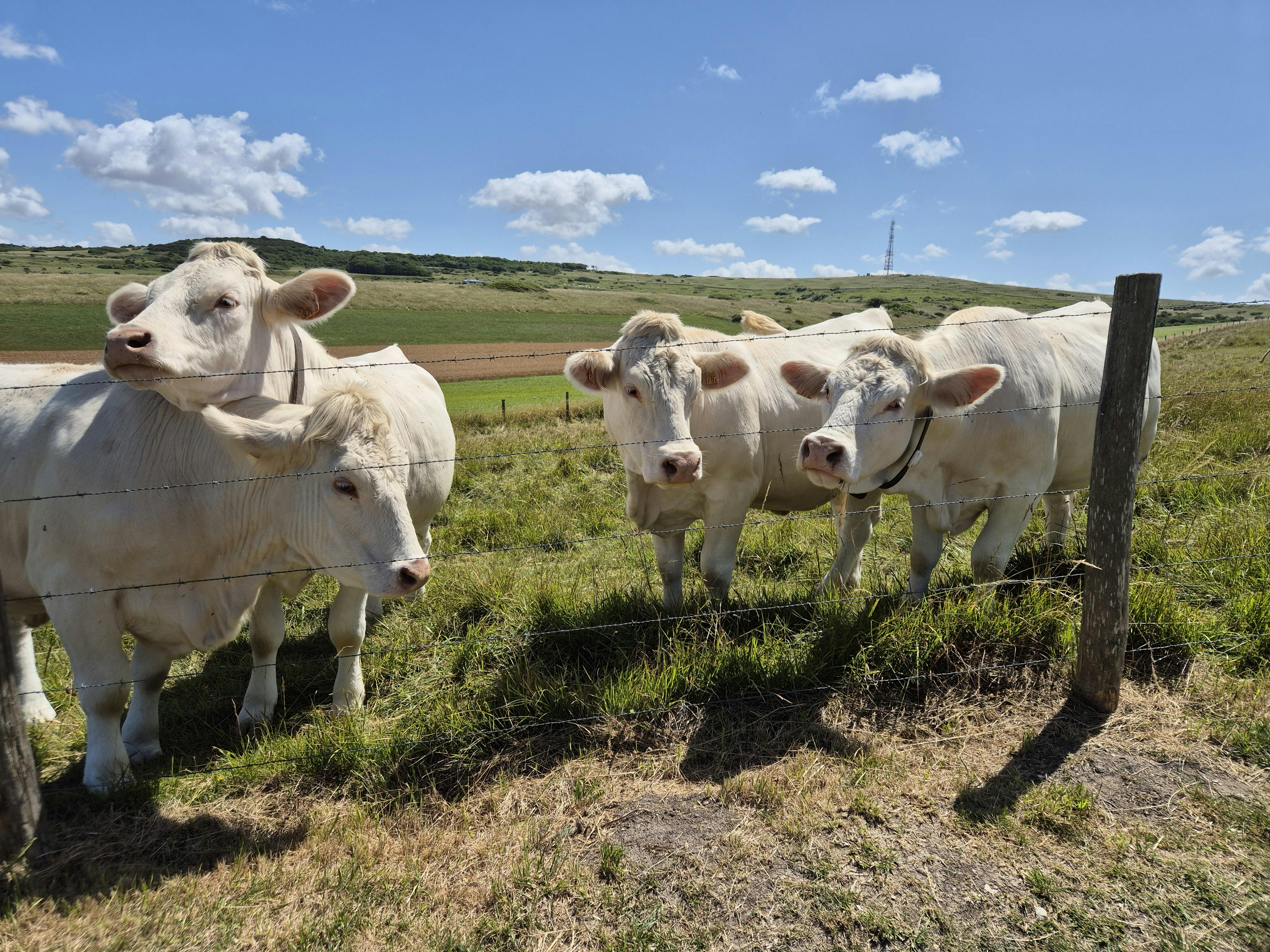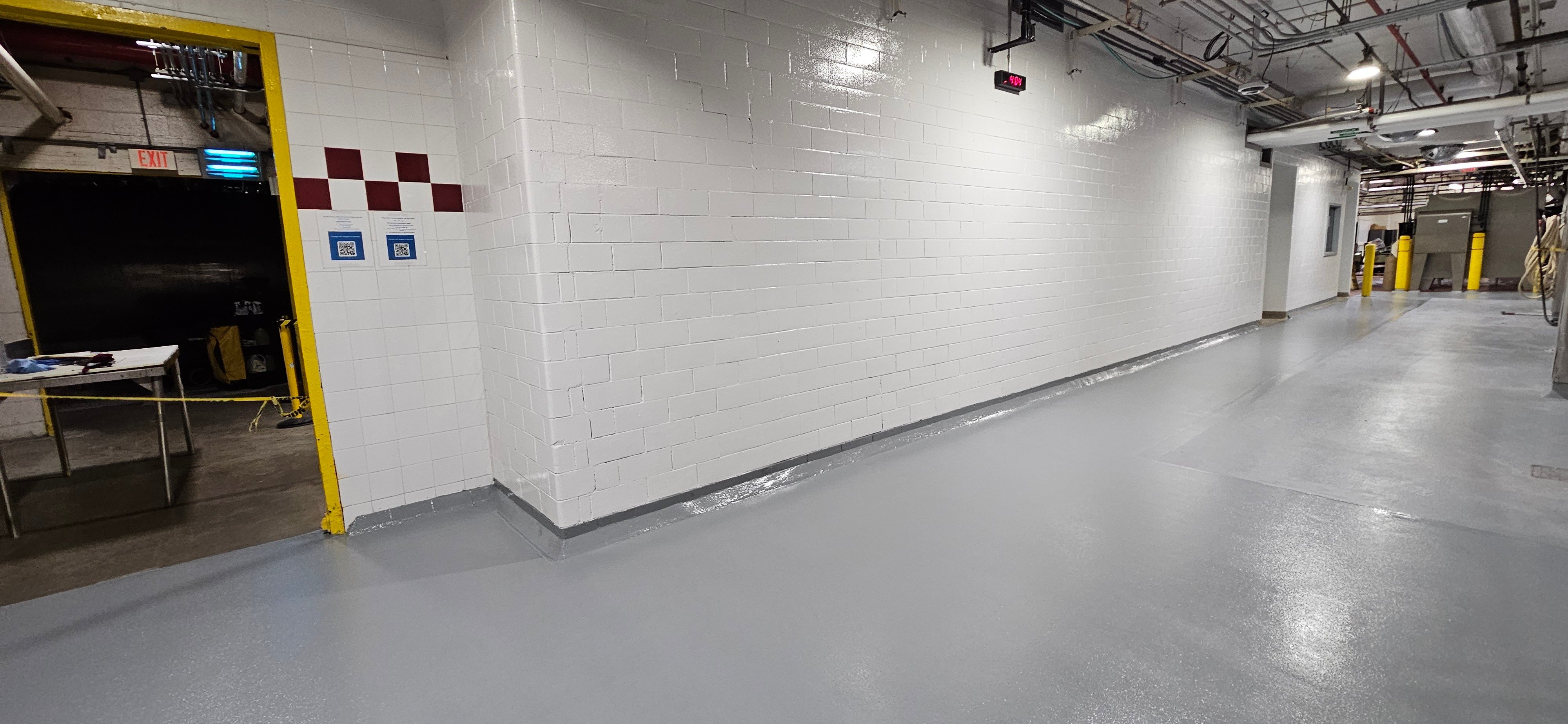Concrete Flooring Options That Stand Up to Chemicals and Waste in Livestock Facilities
July 28th, 2025
3 min read
By Tom Dassie

In a livestock facility, the floor isn’t just something to stand on—it’s a frontline defense against disease, structural damage, and downtime. Between constant exposure to moisture, animal waste, cleaning chemicals, and heavy equipment, traditional concrete alone won’t always cut it. The wrong flooring system can lead to contamination risks, costly repairs, and lost productivity.
That’s why choosing the right concrete flooring options is essential for the long-term success and safety of your operation.
Why Livestock Facilities Need Specialized Concrete Flooring
Livestock environments are among the most punishing for flooring systems. Whether you run a dairy farm, hog operation, or poultry facility, your floors must withstand:
- Constant wet conditions from waste, cleaning, or watering systems
- Corrosive chemicals, including ammonia from waste and harsh cleaning agents
- Heavy loads from equipment like skid steers, tractors, or feed carts
- Temperature fluctuations, especially in open or partially enclosed buildings
- Strict biosecurity standards, often required by regulators or supply chains
Without the proper protection, untreated concrete will eventually crack, wear down, and absorb contaminants. This leads to sanitation concerns, increased maintenance, and unsafe working conditions.
Key Features to Look For in Concrete Flooring Options
When evaluating concrete flooring options for livestock environments, you’ll want to prioritize:
Chemical Resistance
Animal waste contains ammonia and other corrosive substances that can break down unprotected concrete over time. Add cleaning chemicals to the mix, and your flooring system must be able to resist ongoing chemical exposure without degrading.
Non-Absorbency
Pores and cracks in untreated concrete can harbor bacteria, pathogens, and moisture. A good livestock floor must be non-porous and seamless to prevent microbial growth and make cleaning easier.
Durability Under Traffic
From livestock movement to constant equipment use, floors need to endure abrasion, impact, and point loads. A floor that chips, flakes, or erodes under pressure won’t last long in a livestock setting.
Slip Resistance
Safety is just as important for animals as it is for people. Floors should offer slip resistance, especially in wet areas, to reduce the risk of injury for both workers and livestock.
Easy Maintenance
Time is money in livestock operations. The best flooring systems make cleanup quick and effective, especially in areas like feeding zones, birthing pens, or processing rooms.
Top Concrete Flooring Options for Livestock Facilities
Here are three of the most trusted and effective concrete flooring options for agricultural environments:
1. Urethane Cement
Urethane cement is often considered the gold standard for demanding environments like livestock facilities.
Why it works:
- Highly resistant to moisture, chemicals, and thermal shock
- Withstands aggressive washdowns and hot water cleaning
- Long-lasting with minimal maintenance
- Seamless and non-porous finish helps prevent contamination
Best used in:
Milking parlors, processing rooms, wash bays, or areas with heavy equipment and chemical use.
2. Epoxy Coatings
Epoxy systems are widely used in agriculture and can be customized for different environments and traffic levels.
Why it works:
- Creates a smooth, non-porous surface that’s easy to clean
- Offers moderate to high chemical resistance
- Can include textured finishes for slip resistance
- Available in different thicknesses for tailored durability
Best used in:
Feed storage rooms, equipment bays, hallways, or administrative areas.
3. Polished Concrete (Densified + Sealed)
While not ideal for high-moisture or chemically harsh areas, polished concrete can work well in dry zones or secondary spaces.
Why it works:
- Reflective finish brightens the space and reduces lighting costs
- Non-porous surface helps minimize dust and surface absorption
- Requires little maintenance
Best used in:
Offices, hallways, break rooms, or storage areas not directly exposed to waste or water.
Supporting Floor Features: Joint Fillers and Slope
Beyond surface treatments, other concrete features can greatly improve hygiene and longevity.
- Joint fillers protect concrete slab edges from moisture infiltration and reduce tripping hazards or equipment damage.
- Proper slope and drainage are critical in livestock buildings, especially where washdowns occur regularly. Water should flow efficiently to drains to avoid standing puddles or seepage.
Common Mistakes to Avoid
When planning a flooring upgrade or new build, be cautious of the following:
- Leaving bare concrete exposed in wet or waste-heavy zones. This will inevitably lead to erosion and contamination.
- Choosing residential-grade coatings or sealers that can’t handle chemical or impact loads.
- Skipping mechanical surface prep, which is necessary for coatings to properly bond and last.
- Overlooking slope and drainage, which can cause long-term moisture damage and hygiene issues.
CustomCrete’s Experience in Agricultural Flooring
CustomCrete has worked with agricultural clients throughout the Midwest to deliver high-performance concrete flooring systems tailored to livestock environments. Our teams understand the specific needs of barns, holding pens, processing areas, and beyond—and we know how to install coatings that don’t just meet today’s standards, but support years of operation with minimal hassle.
We take a consultative approach to every job—evaluating your traffic levels, cleaning practices, and chemical exposure to help you select the best solution.
Final Thoughts
In livestock facilities, your floor is a critical part of your biosecurity and operations. Choosing the right concrete flooring options can prevent premature damage, improve animal and worker safety, and support regulatory compliance. Whether you’re building new or renovating an aging facility, don’t overlook the value of a well-designed, chemical-resistant concrete system.
Need expert help choosing the right flooring system for your livestock operation? Read our next blog, “Best Concrete Applications in Agriculture”.












.jpg?width=2048&height=1365&name=CC103622%20(2).jpg)
.jpg?width=1200&height=1600&name=Copy%20of%20IMG_1457%20(1).jpg)











